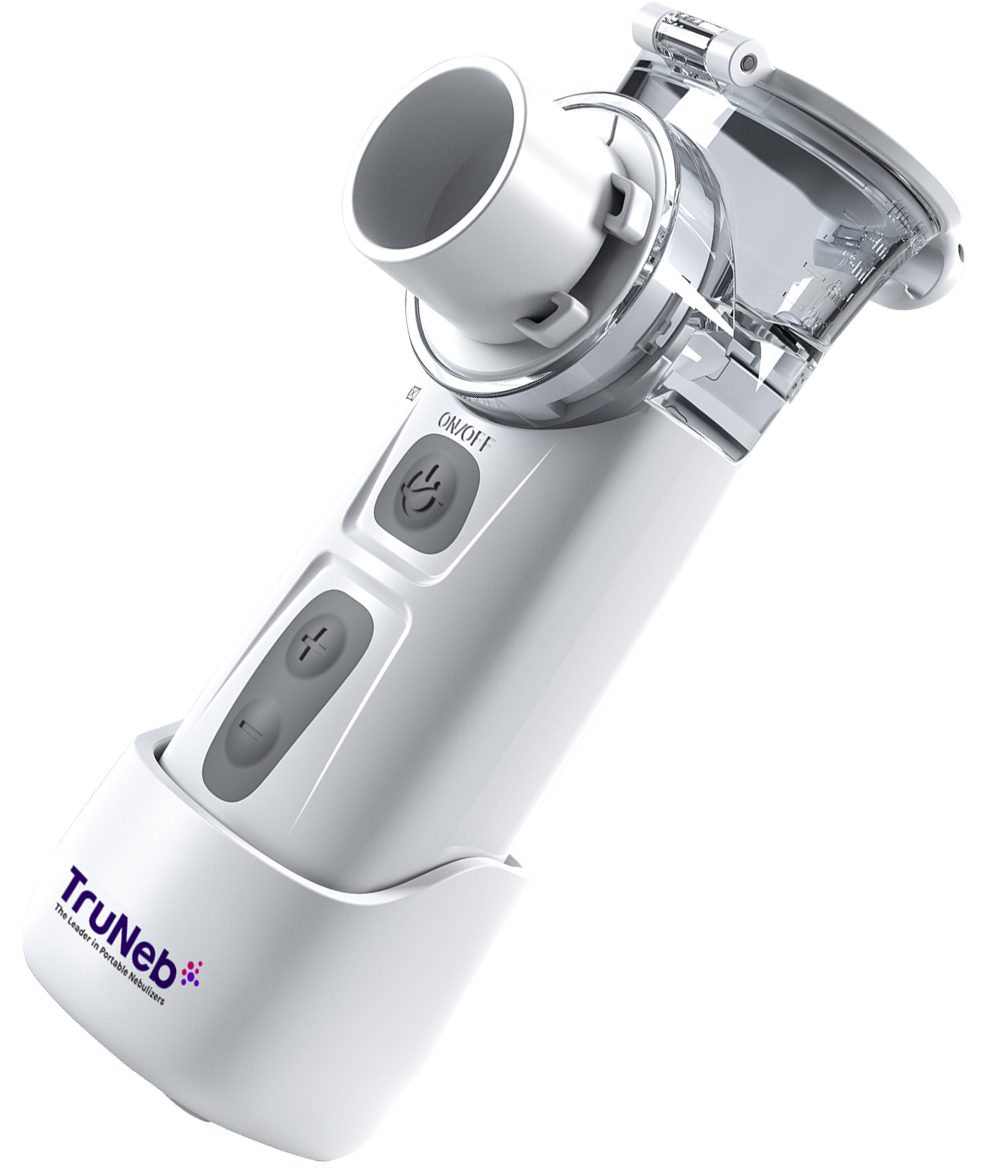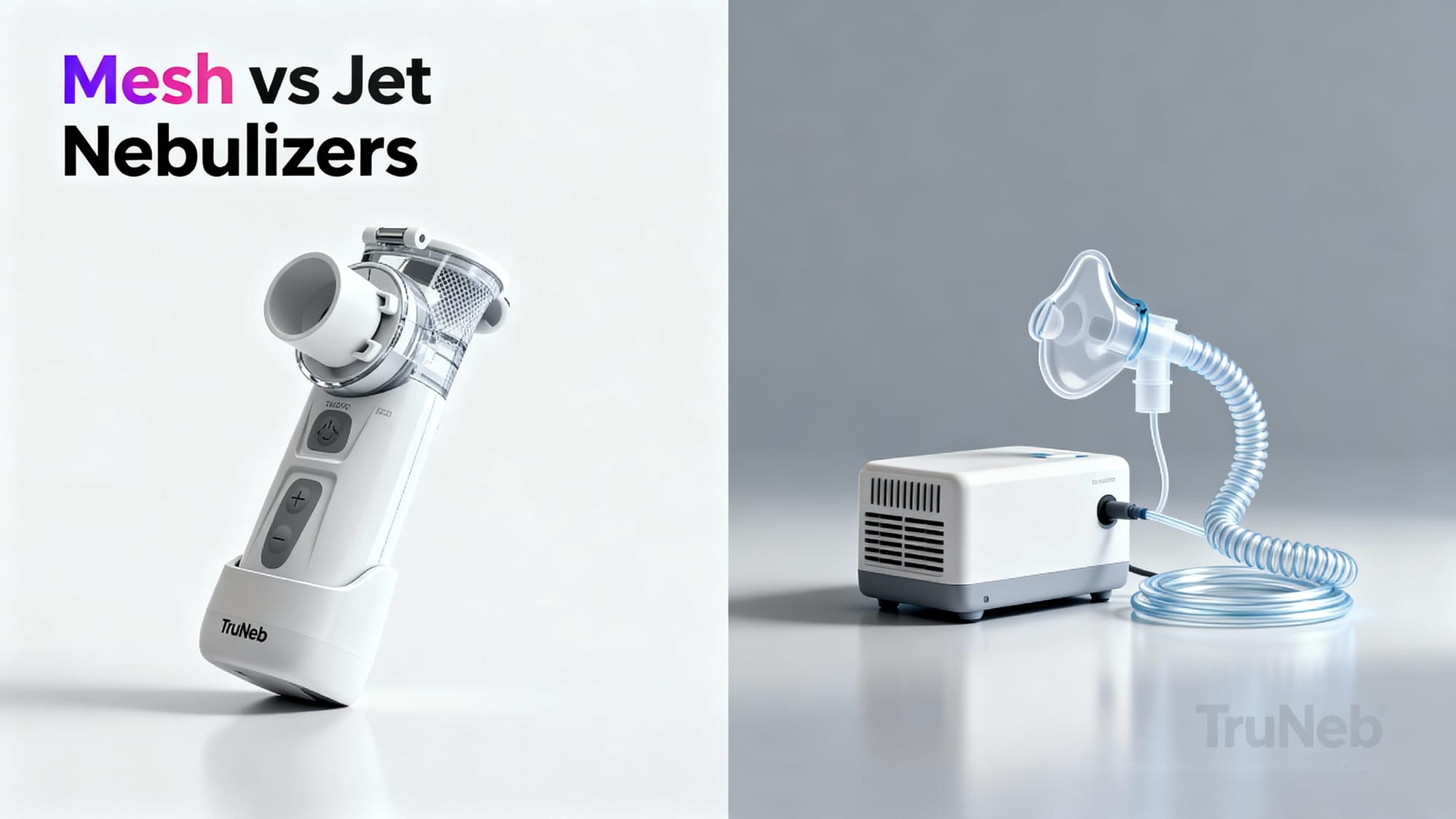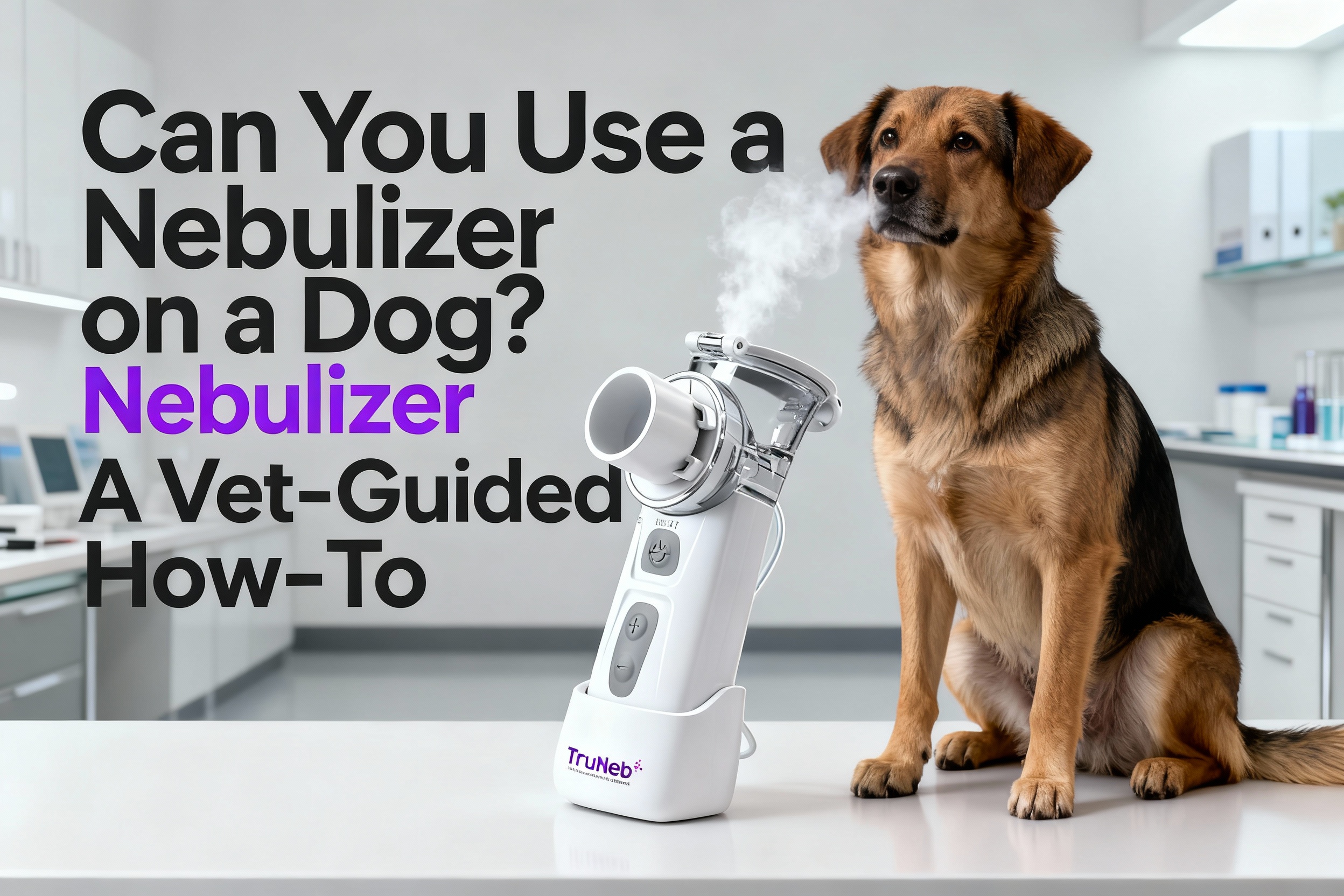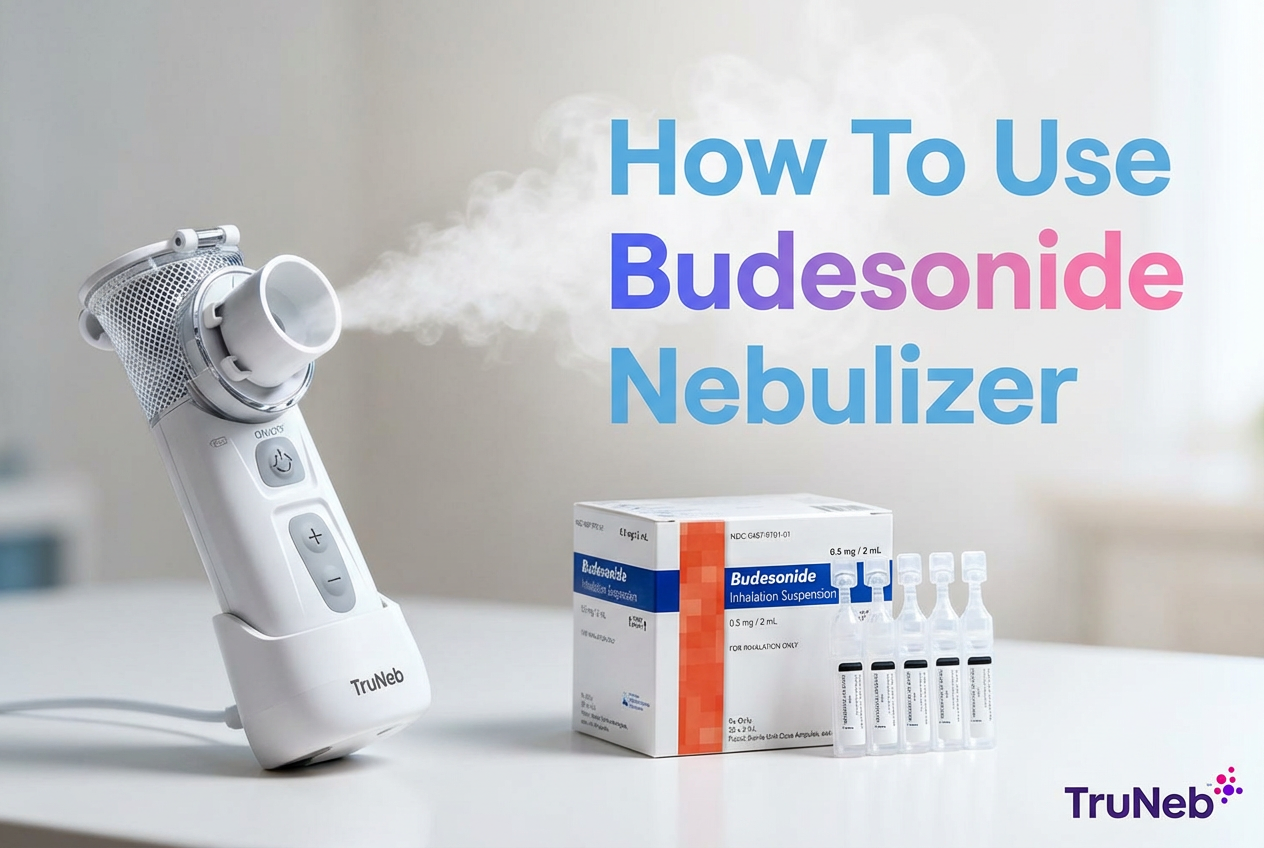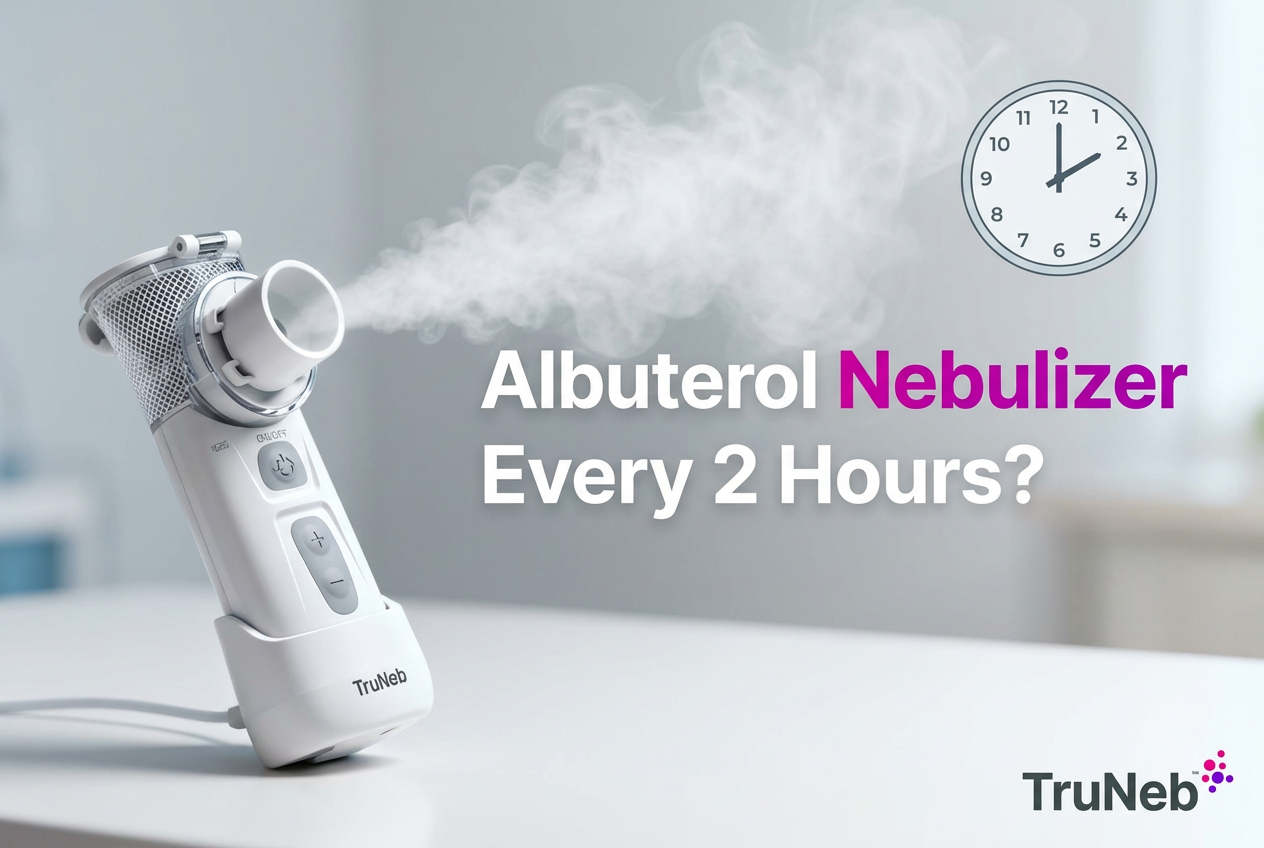On this page
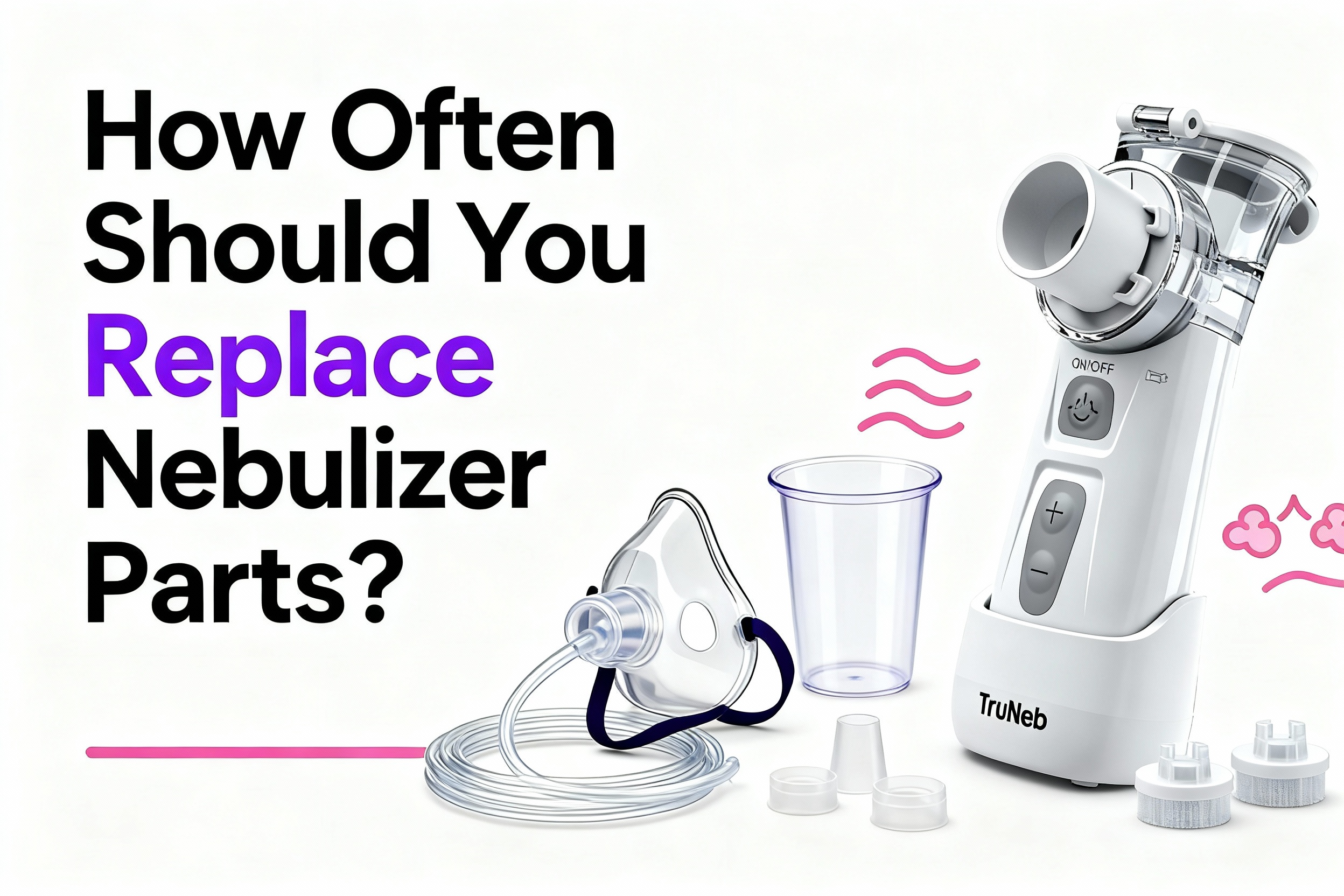
Why Regular Replacement of Nebulizer Parts Matters
Nebulizer parts don’t last forever. Plastic wears down, tiny openings clog, and filters collect dust. Over time, that can lower mist output and make treatments take longer. Old parts can also trap germs, which can raise your risk of a lung infection.
If you’re wondering how often you should replace nebulizer parts, a simple nebulizer maintenance schedule keeps treatments safe and effective.
Quick rule of thumb: most reusable parts last about 6 months, and disposables typically last days to a couple of weeks. Always check your device manual for the exact schedule.
Key takeaway: Fresh parts help your medicine reach your lungs better and keep your equipment safer.
Nebulizer Parts Replacement Schedule at a Glance
Use this nebulizer replacement schedule as a quick reference. Pair it with your nebulizer maintenance schedule and always follow your device manual.
| Part | Recommended replacement | Notes |
|---|---|---|
| Mask (disposable) | After about 5–7 uses | Usually equals 1–2 weeks of daily treatments |
| Mask (reusable) | Every 6 months | Replace sooner if cracked or won’t seal |
| Mouthpiece (reusable) | Every 6 months | Swap earlier if chipped or loose |
| Nebulizer cup/chamber (disposable) | About 10–14 treatments | Short-term use only |
| Nebulizer cup/chamber (reusable) | Every 6 months | Performance can drop as plastic ages |
| Tubing (jet nebulizers) | Every 6 months | Do not wash the inside; replace if yellowed or stiff |
| Compressor air filter | Every 6 months, or if discolored | Check monthly. Never run without a filter |
| Mesh plate (mesh nebulizers) | Per manual (commonly a few months to ~500 uses) | Clean gently; replace if mist output drops |
| Nebulizer machine (compressor/mesh unit) | Around every 5 years | Replace sooner if performance declines |
These timelines are general; follow your manual first.
Key takeaway: Use this schedule to swap parts on time so your treatments stay effective and safe.
Disposable vs. Reusable Parts: What’s the Difference?
Disposable parts are made for short runs. They’re lighter, not built for repeated disinfection, and tend to lose shape quickly. Reusable parts use sturdier materials you can clean and disinfect regularly, but they still wear out with time. That’s why disposables are swapped after a handful of uses, while reusables typically last about 6 months.
Key takeaway: Disposable parts are short-term; reusable parts are built for months of use with regular cleaning, but both need timely replacement.
How Often to Replace Each Nebulizer Part
Nebulizer Mask and Mouthpiece
- Disposable masks: replace after about 5–7 uses (usually 1–2 weeks of daily use).
- Reusable masks: replace every 6 months, or sooner if the mask loses its seal, turns cloudy, or cracks.
- Mouthpieces: usually hard plastic; change about every 6 months, or earlier if chipped or loose.
If a mask doesn’t seal or turns cloudy, replace it sooner. A poor fit leaks medication and reduces your dose.
Nebulizer Medication Cup (Chamber)
- Disposable cups: replace after about 10–14 treatments.
- Reusable cups: replace around every 6 months.
The cup creates the mist. If it’s scratched, cloudy, or performance drops, swap it sooner. If you notice longer treatment times with the same dose, the cup could be worn.
Nebulizer Tubing (Jet Nebulizers)
Replace about every 6 months. You can’t truly clean the inside, and trapped moisture can allow germs to grow. Don’t try to clean the inside—just replace it. Replace sooner if tubing turns yellow, gets stiff, or won’t grip the connectors.
Compressor Air Filter
Replace every 6 months, or earlier if it looks gray or clogged. Check monthly. Never wash a paper/fiber filter unless your manual allows it. A clogged filter reduces airflow and can strain the motor. For jet nebulizers, include this in your routine filter replacement schedule. Running without a filter can pull dust into the motor.
Other Accessories
If you use add-ons like T-pieces, valves, or nasal plugs for sinus systems, replace them if cracked or at roughly the 6-month mark. When in doubt, swap the full kit (mask or mouthpiece + cup + tubing) on the same schedule.
The Nebulizer Machine (Compressor or Mesh Unit)
Wondering “do nebulizers wear out” or “how long do nebulizers last”? The typical life expectancy of a nebulizer compressor is about five years with routine care. Signs it’s aging: longer treatment times, weak airflow, overheating, or unusual noises. Portable mesh devices don’t have tubing or a compressor filter, but their mesh plate can clog over time and can need replacement per the manual.
Key takeaway: If a part looks damaged, won’t seal, or mist output drops, replace it even if the calendar says you’re not due yet.
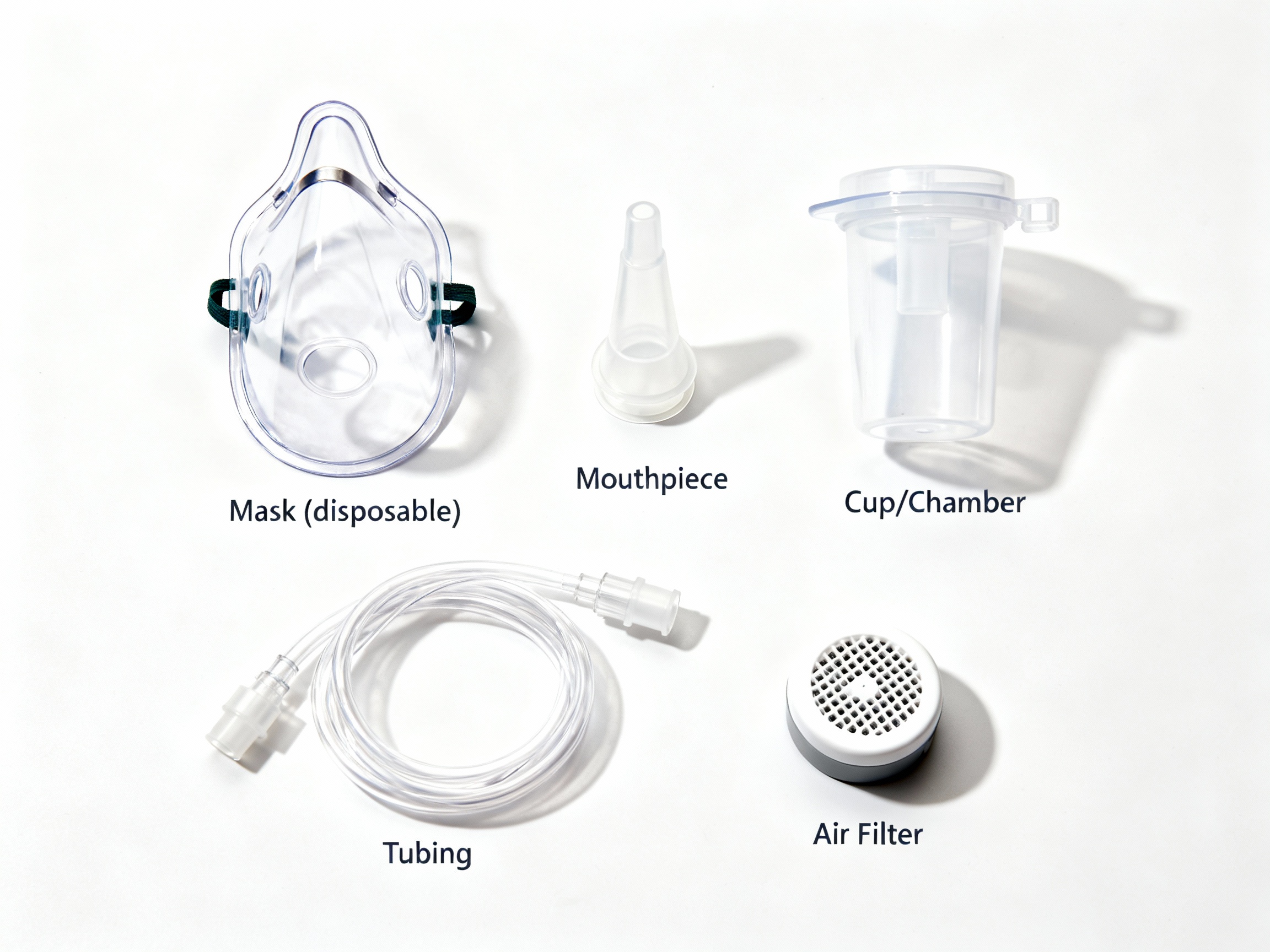
Cleaning and Disinfecting: Keep Parts Safe Between Replacements
Good cleaning helps parts last and lowers infection risk. A simple nebulizer cleaning schedule—clean after each use and disinfect weekly—helps parts reach their full lifespan.
- After each use: take apart the cup, mask or mouthpiece, and T-piece. Rinse in warm water. Wash with mild soap if your manual allows. Shake off water and air-dry on a clean towel.
- Once a week: disinfect reusable parts by soaking in 1 part white vinegar to 3 parts hot water for 30–60 minutes. Rinse well and let them air-dry completely.
- Don’t wash the compressor or the inside of tubing. Never run the machine without its filter.
- Wash your hands before handling clean parts and store them dry in a clean container.
Warning: Steam inhalers are not nebulizers—don’t use them for prescription breathing medications.
Cleaning helps, but you still need to replace parts on schedule.
Key takeaway: Clean daily, disinfect weekly, and replace on schedule for safe, effective treatments.
Signs It’s Time to Replace Something
- Little or no mist even with proper setup.
- Longer treatment times than usual for the same dose.
- Cracks, chips, or cloudy plastic on mask or cup.
- Tubing is yellowed, stiff, or loose at the ends.
- Filter looks gray or clogged.
- Strange noises, overheating, or weak airflow from the machine.
Tip: If you’re unsure, bring your setup to your doctor or a DME shop. They can check output and advise next steps.
Key takeaway: If mist is weak, plastic is cracked or cloudy, or sessions take longer, replace the worn part right away.
TruNeb™ Portable Mesh Nebulizer: A Quick Note
A portable mesh nebulizer like TruNeb™ has no external tubing or compressor filter, which can simplify upkeep. You still need to clean the reservoir and mesh plate as directed, and replace the mesh module if mist output drops. If cleaning doesn’t restore mist output, a mesh replacement is typically needed per the manual. Portable units can help if you want fewer parts to swap and easier travel.
We recommend following your specific device manual for mesh care and replacement intervals.
Key takeaway: Mesh nebulizers skip tubing and filters, but the mesh module still needs cleaning and periodic replacement.
Safety Note
- Do not share nebulizer parts with others.
- Replace damaged parts immediately.
- Steam inhalers aren’t nebulizers and aren’t for breathing prescription medications.
- Talk to your doctor before trying a new medication or changing your treatment plan.
- ⚠️ If you have severe trouble breathing, blue lips/face, chest pain, or confusion, call emergency services right away.
Following your device manual and your doctor’s advice helps keep treatments safe.
Key takeaway: Don’t share parts, replace damaged items promptly, and follow your device manual and doctor’s advice.
Frequently Asked Questions
Tap or click a question below to see the answer:
Disposable parts aren’t built for repeated high-heat or long-term use. Cleaning can get you a few more uses, but they wear out fast and often aren’t safe or effective for extended reuse. Switch to a reusable set if you need a longer lifespan.
No. You can’t effectively clean or dry the inside of tubing—replace it instead.
A nebulizer set means the accessories: mask or mouthpiece, cup, and tubing. The machine is the compressor or mesh unit. Most people replace the set multiple times before they replace the machine.
Put a small piece of tape on your tubing or cup with the start date, or set a phone reminder at 6 months. Keeping one spare kit at home also makes it simple to swap on time.
Most masks, cups, and tubing can go in household trash. If there’s leftover medication, rinse first. Place in a bag if you prefer to keep it contained.
Wrap-Up: A Simple Schedule You Can Stick To
Replace most reusable parts about every 6 months, swap disposables after a handful of uses, and plan on a new machine around the 5-year mark. Clean after each treatment and disinfect weekly so parts reach their full lifespan. Following a simple nebulizer replacement schedule helps you stay on track.
Disclaimer: This article is for informational purposes only and isn’t a substitute for professional medical advice. Always talk with your doctor about your health and treatments.

